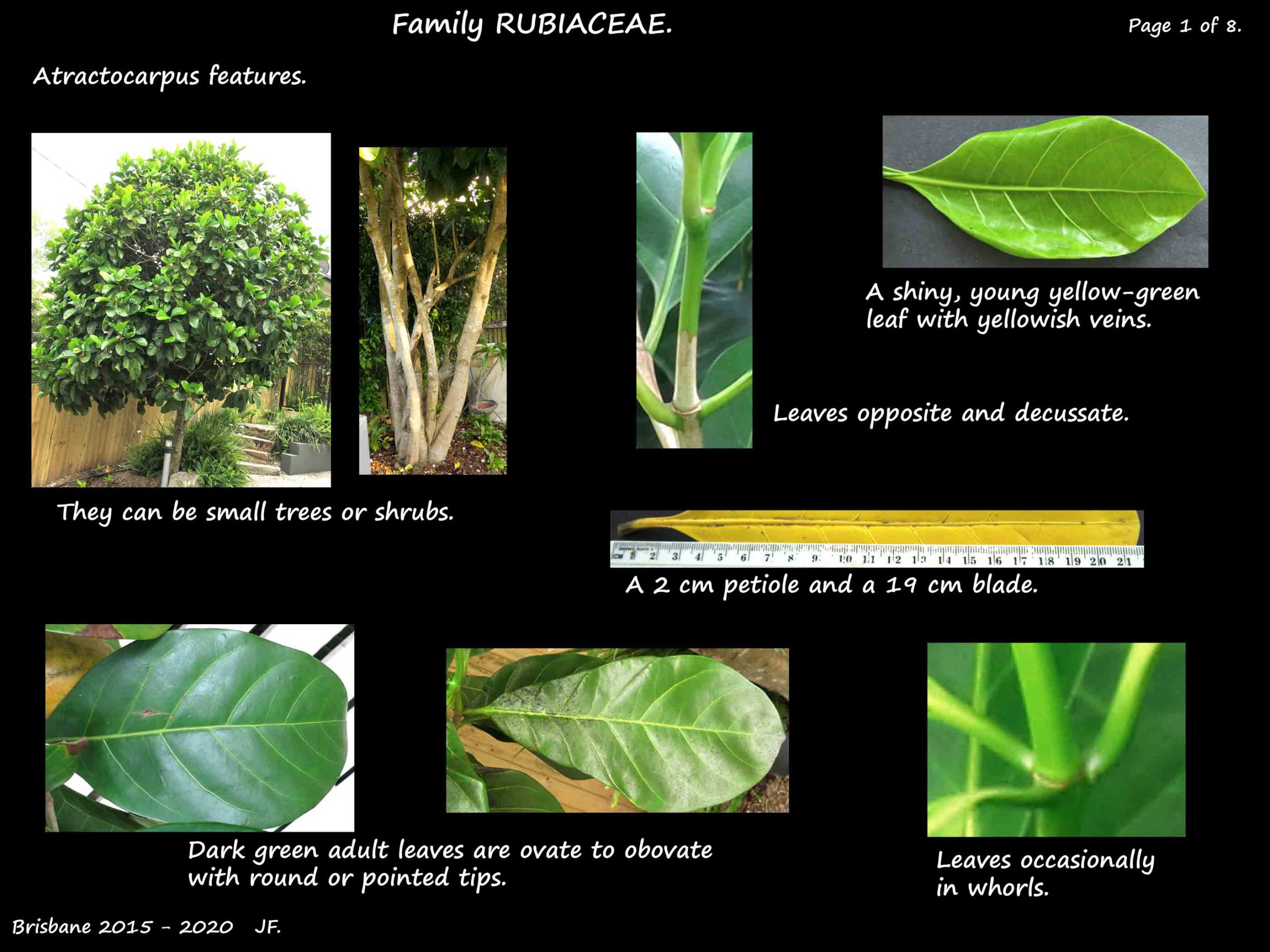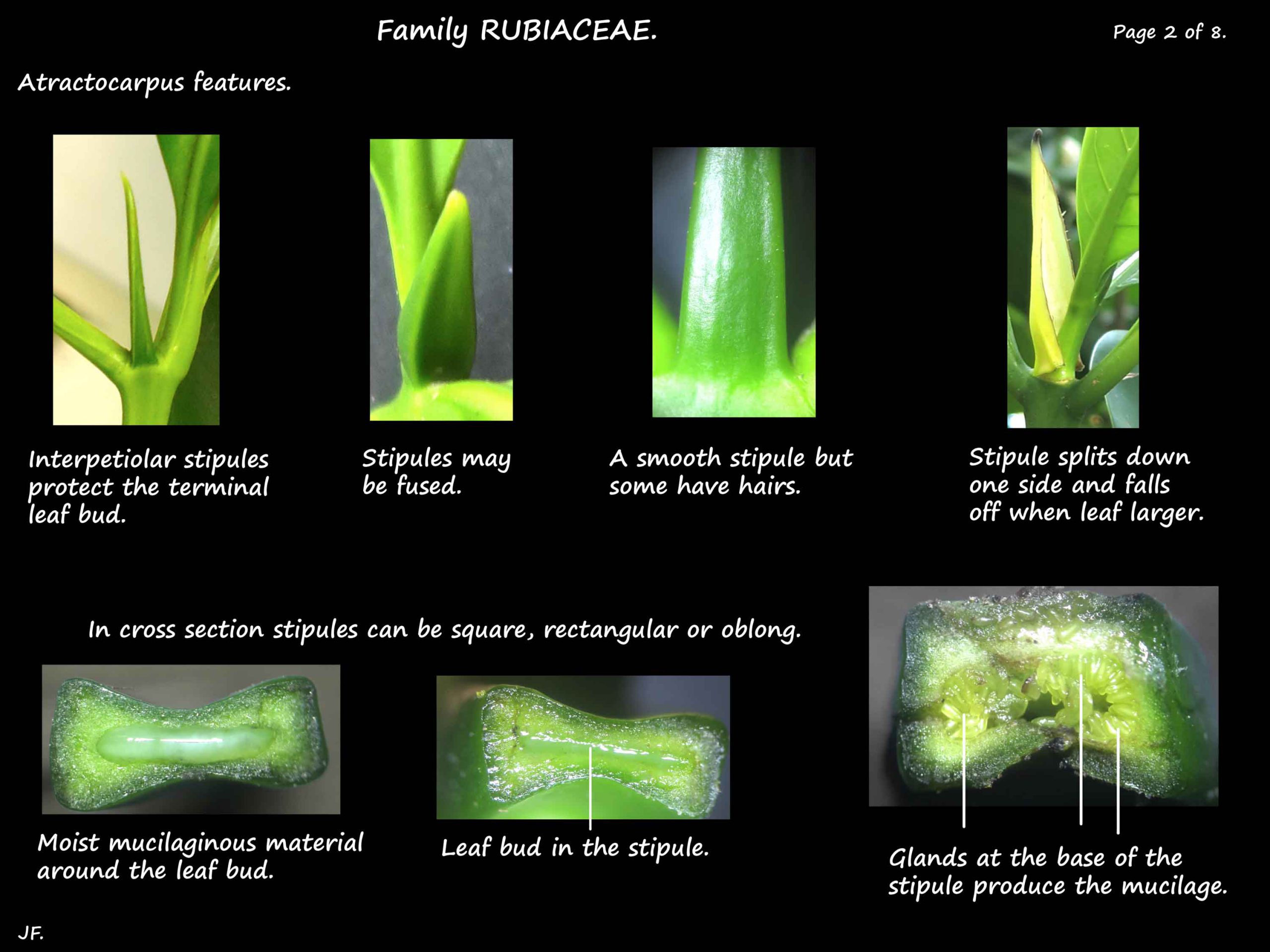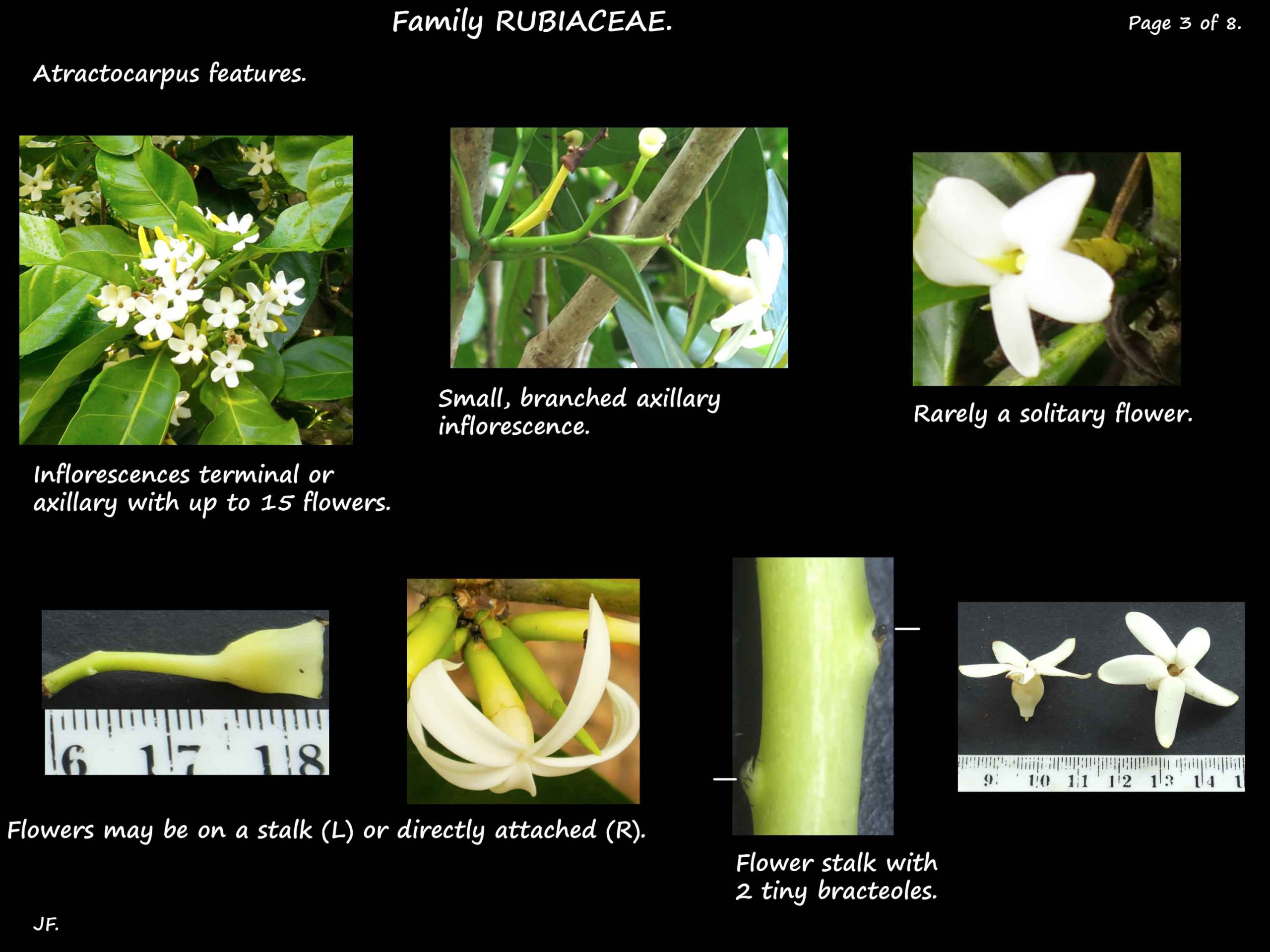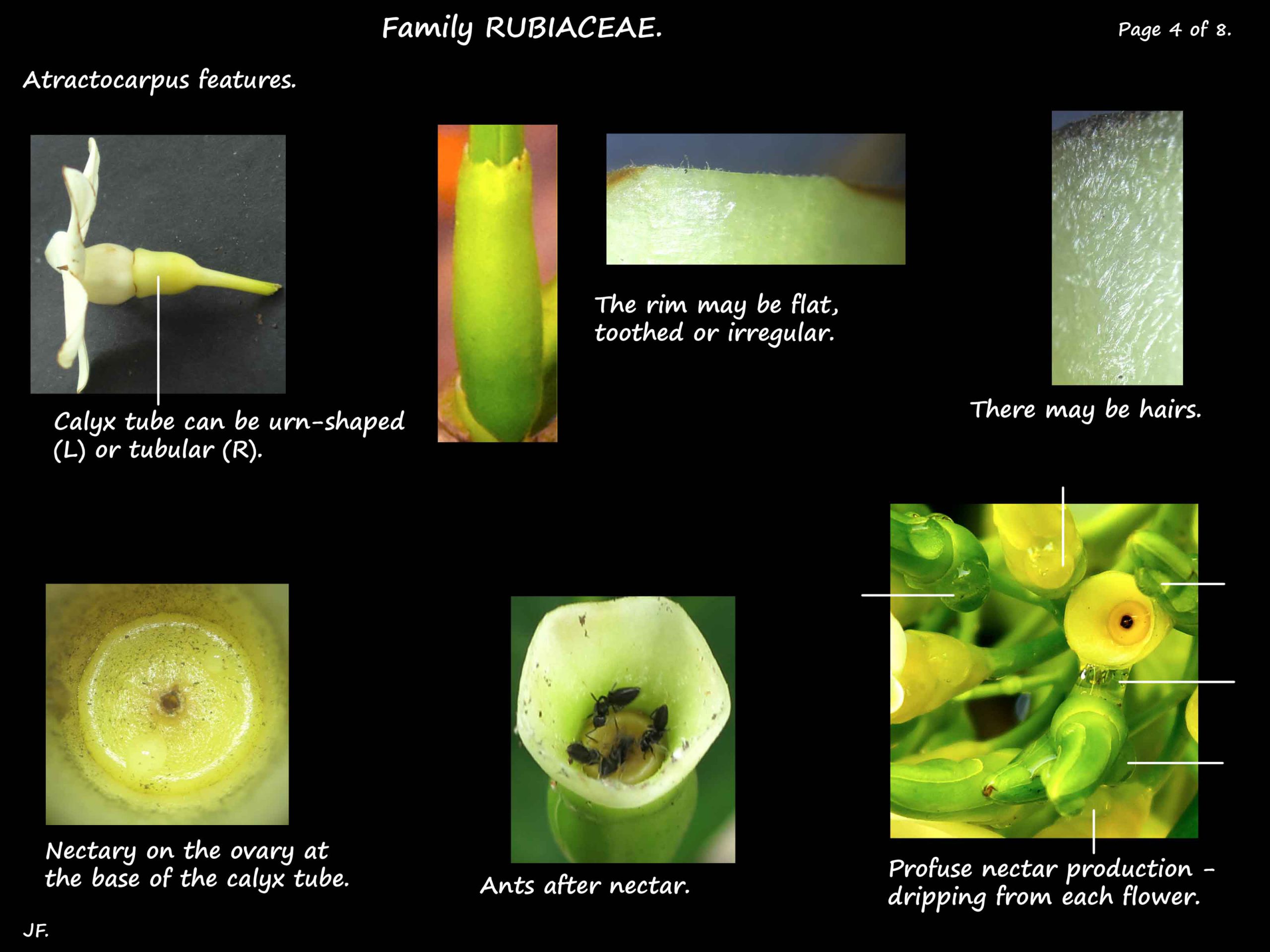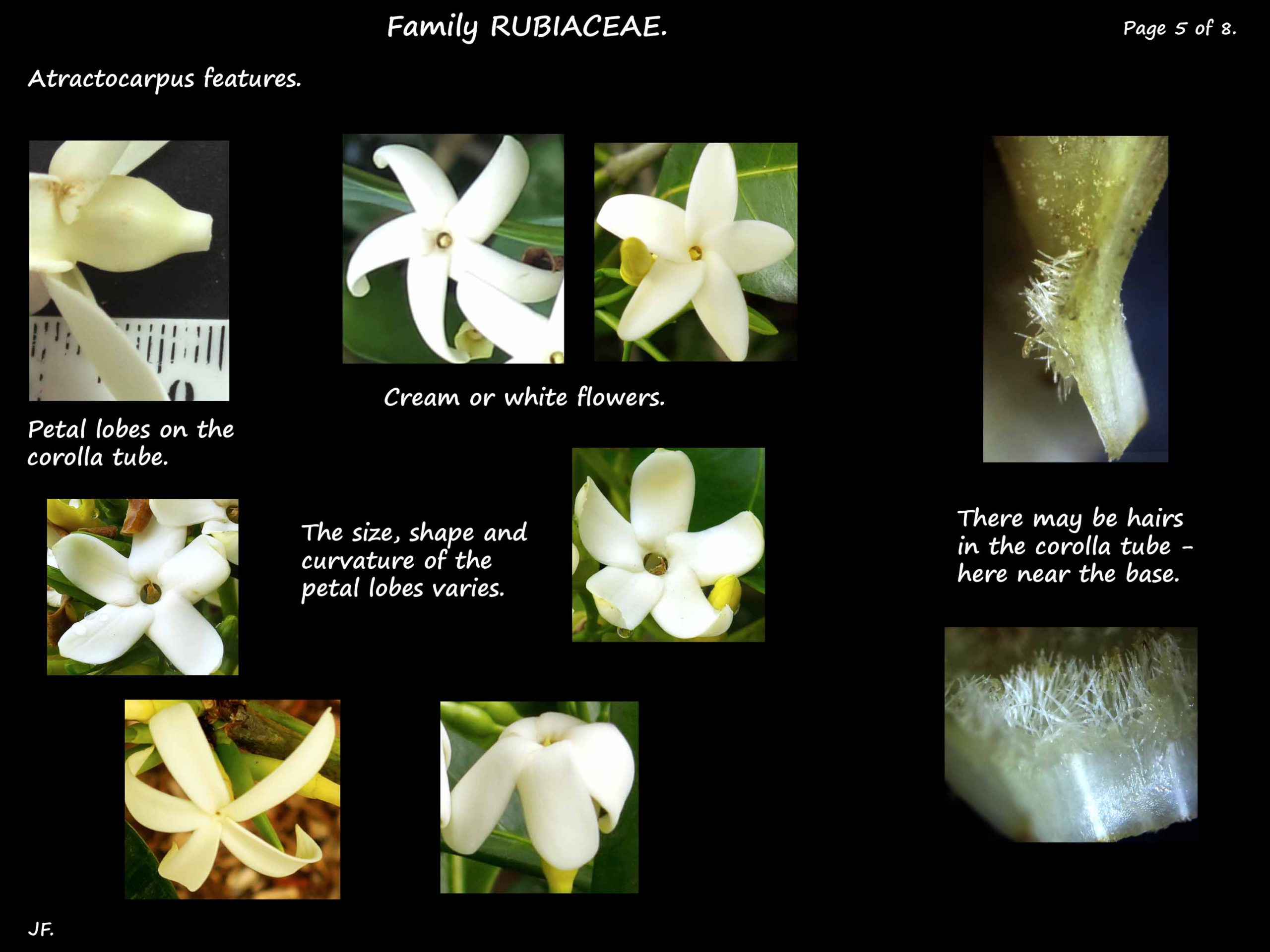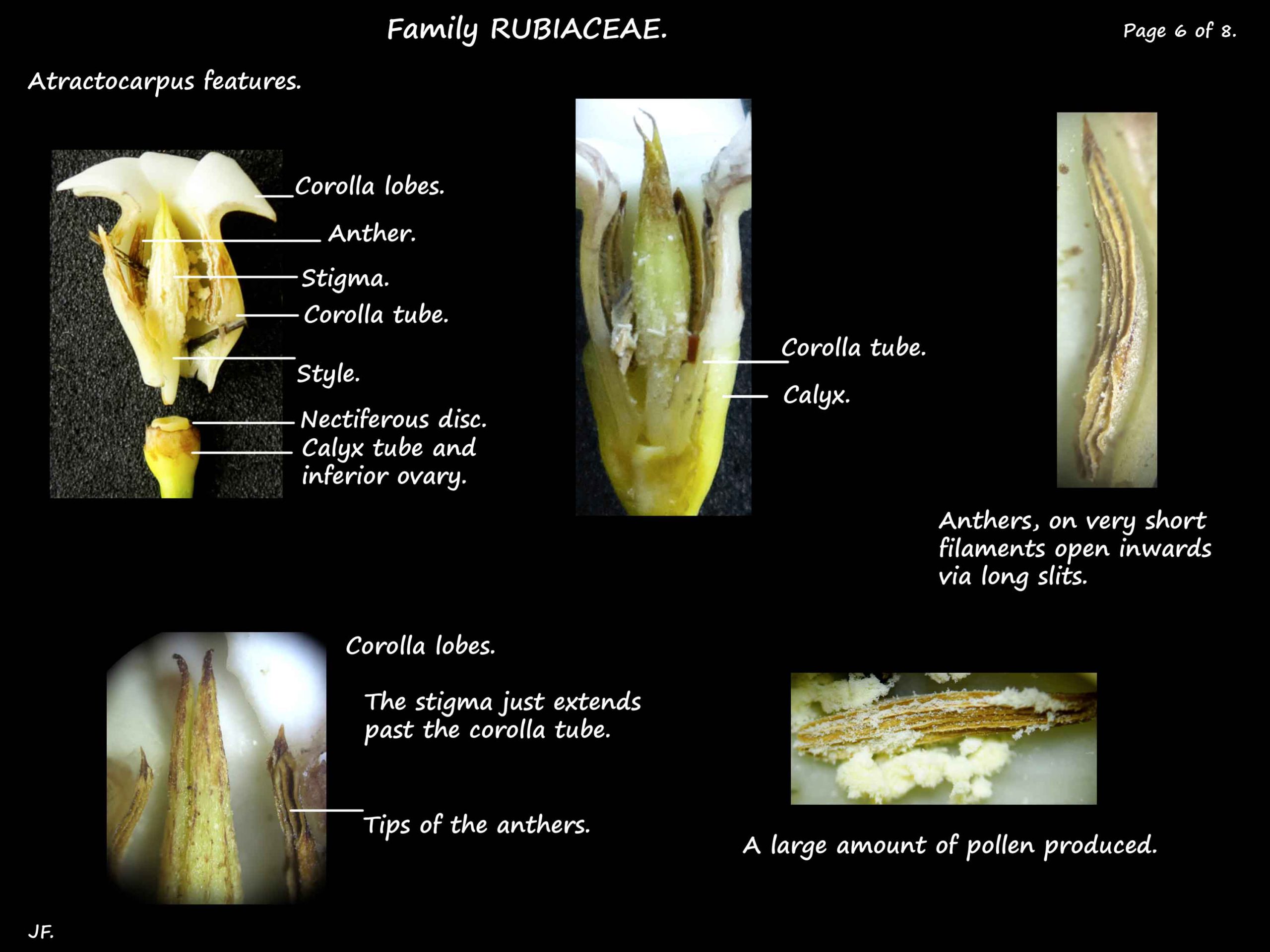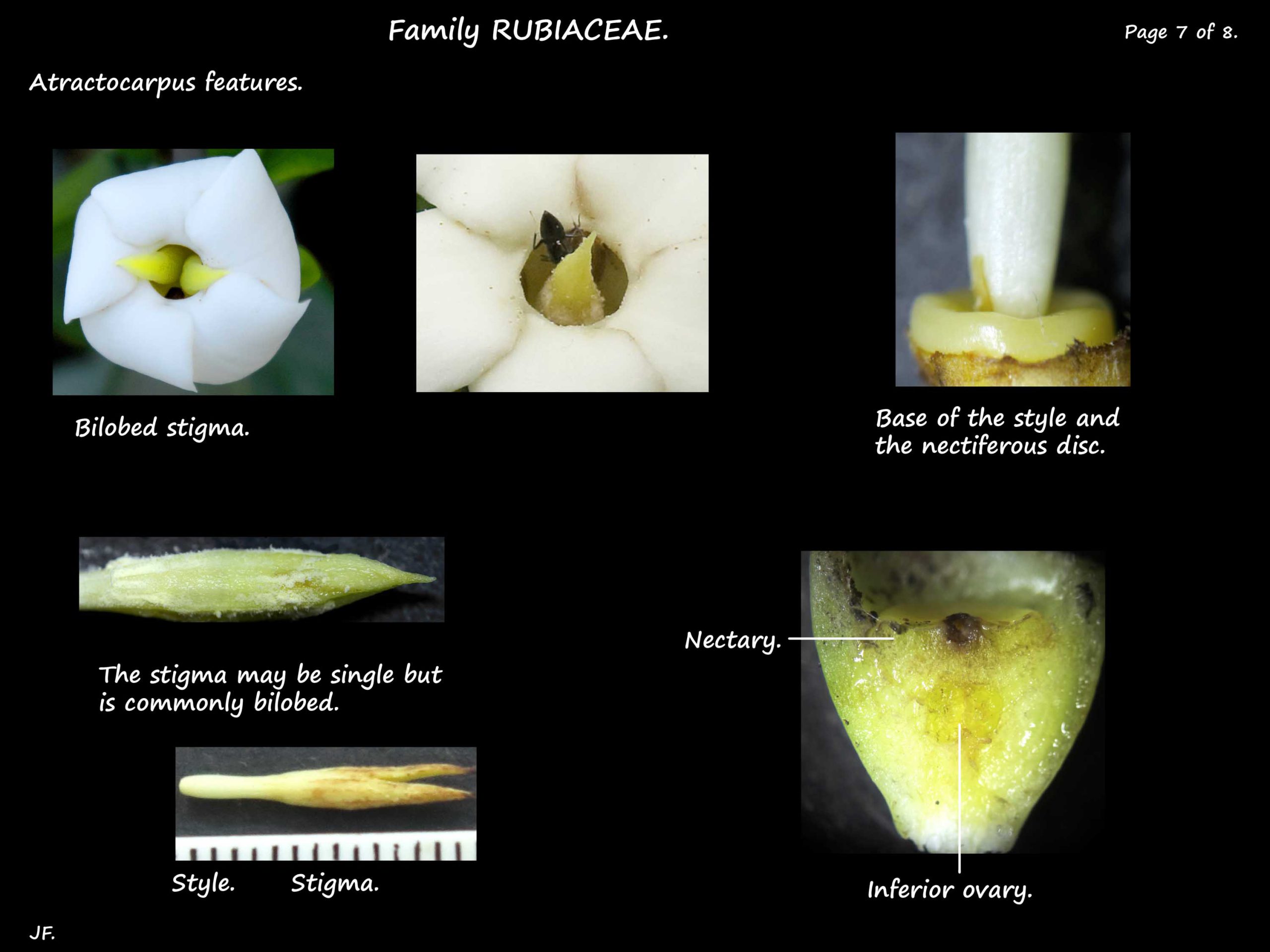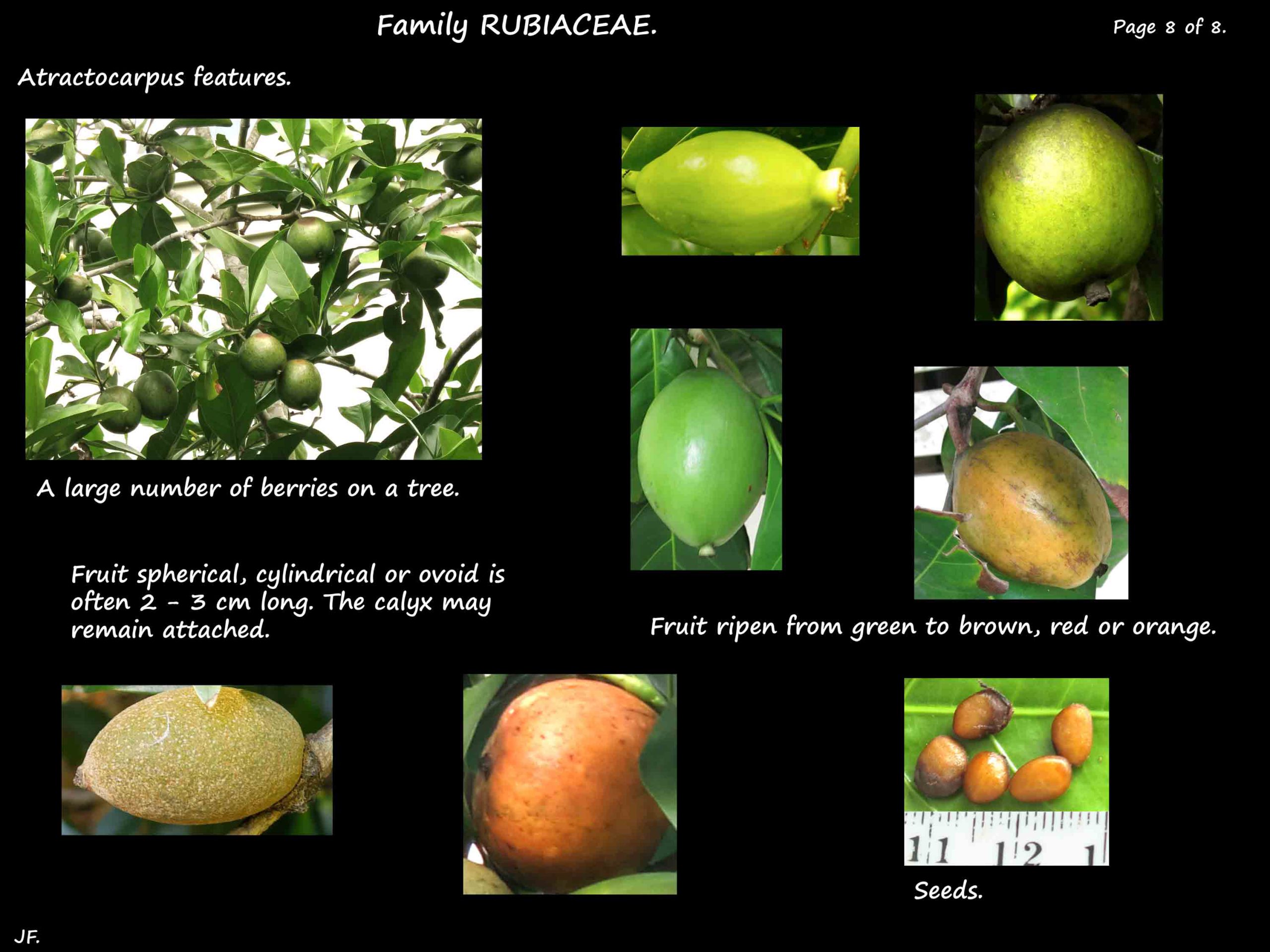Atractocarpus.
Family Rubiaceae > Subfamily Ixoroideae > Tribe Gardenieae.
Many were previously known as Randia or Gardenia.
There are about 40 species with 7 native to Australia.
Found in Queensland and N.S.W. they are known as native Gardenias.
The following description mainly covers species found in Australia.
They are mostly shrubs or small trees up to 13 m high.
Young shoots may be smooth to densely hairy and older branches have lenticels.
Leaves are mostly opposite but can be in whorls of 3 or 4.
Leaves are crowded at the branch ends so pairs of leaves may appear to be a whorl of 4.
Petioles may be absent or from 0.5 to 2 cm long.
Leaf blades can be 5 to nearly 30 cm long and 0.5 to 12 cm wide.
They can be oblong to obovate, lanceolate, elliptic or narrowly elliptic.
The tips can be rounded or pointed.
Some have linear juvenile leaves.
Both surfaces can be smooth to covered in long hairs.
Often only the lower surface has hairs.
There may be pits or clumps of hairs in some of the vein axils.
There are interpetiolar stipules up to 3 cm long.
They may have hairs on the outer surface and sometimes leave a scar when they fall off.
They enclose and protect the terminal leaf buds.
Terminal or axillary inflorescences can have 2 to 15 flowers, they are rarely a solitary flower.
Flowers, with parts in 5’s can be bisexual or male or female.
The inflorescence stalks may only be 1 to 2 mm long with a bract at the base.
The flower stalks vary from 1 to 18 mm long with a bracteole.
The bracts and bracteoles fall off.
The flowers are often fragrant.
The sepal bases are fused into a tube commonly 5 to 10 mm long but up to 3 cm.
The small lobes can be rounded, pointed or irregular or there may be none.
There may be hairs, sometimes dense, on the sepals.
The bases of petals are fused into a tube from 4 to 30 mm long.
The lobes are usually between 2 to 15 mm long but occasionally up to 30 mm.
The lobes, with round or pointed tips, may curve backwards.
The white or cream petals become brown as they age.
They may be smooth or have some hairs.
Stamens, on a very short or no filament, insert into the corolla tube.
The tube is sometimes swollen where they insert.
The anthers, 4 to 10 mm long, open inwards.
There are usually 2 locules in the ovary each with 2 or more ovules.
The style and stigma can be up to 2.5 cm long.
There may be a single stigma but often there are 2 lobes up to 8 mm long.
There is a nectiferous disc.
The spherical, cylindrical or ovoid berries often have the calyx lobes still attached.
Commonly around 2 to 3 cm long they can be up to 6 cm.
When mature they can be dark brown, red, orange or yellowish.
There can be a few to many seeds.
J.F.
